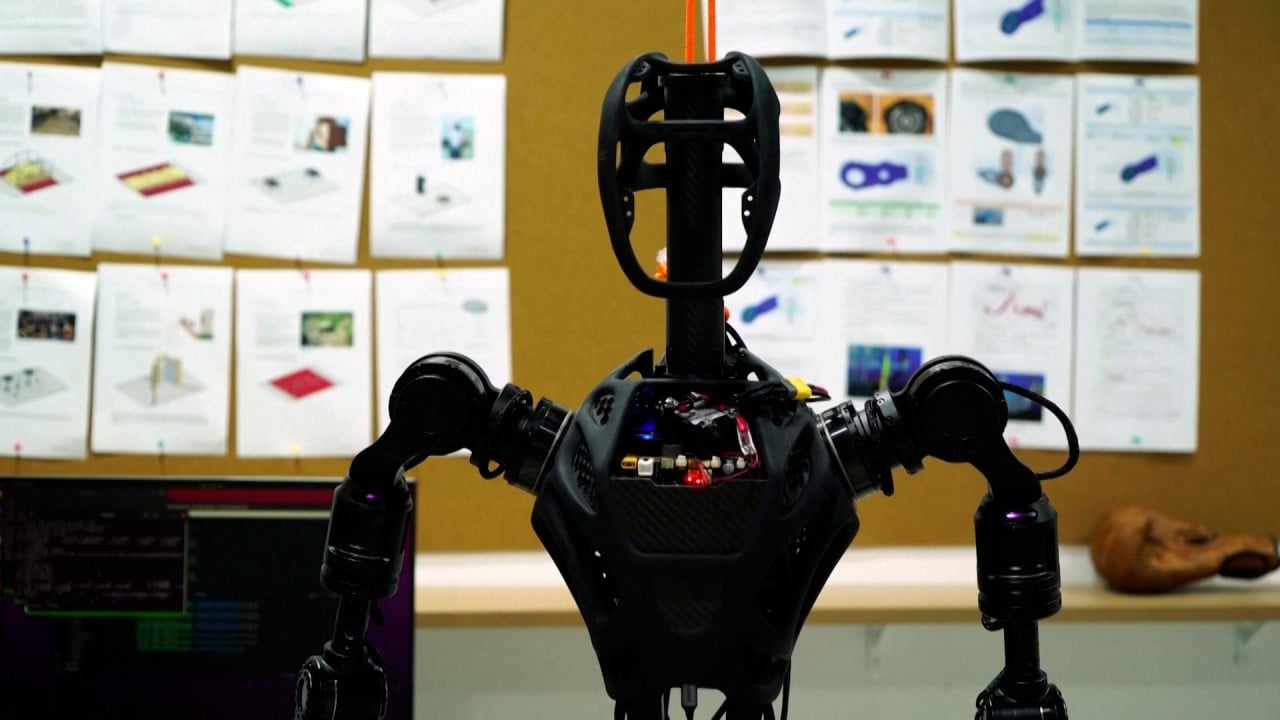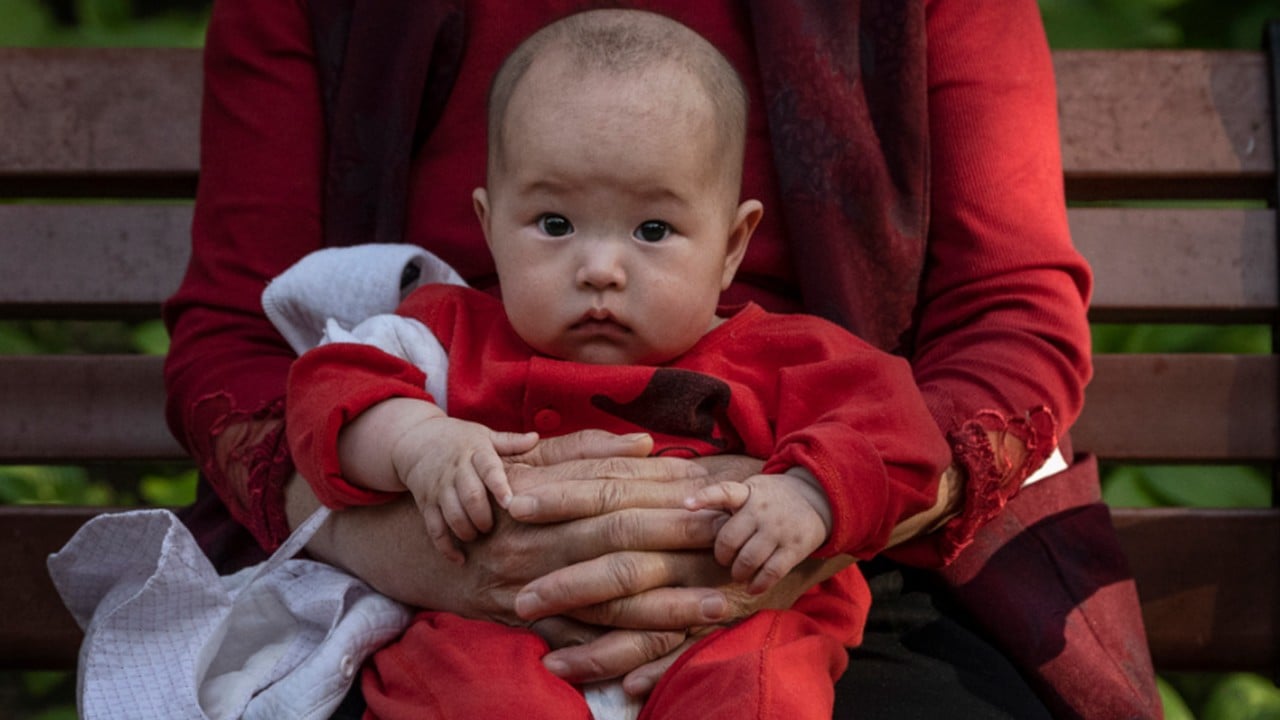
China’s healthcare costs fuel consumption in ageing society, but alarms are blaring in the medical insurance fund
- In difficult economic times, Chinese people have become increasingly reluctant to tap into their savings, but they also care more about their health, and for that they’ll spend
- Beijing’s recent plan to boost household consumption promotes traditional Chinese medicine, online hospitals and rehab services that have boomed in recent years
In the span of just two weeks, Li Ying’s meagre monthly pension of 2,000 yuan (US$275) was gone – all spent on the alleviation of her chronic neck pain.
Although she lives in one of China’s most affluent areas with relatively strong welfare benefits, Zhejiang province, the 67-year-old farmer opts to lead a frugal life and sees the value in saving up for a rainy day.
It’s perhaps a wise inclination – or at least one shared by many retirees in the face of China’s uncertain economic outlook – but it’s not necessarily the best mentality to drive consumption and fuel economic growth.
Since I turned 64, all manner of ailments, however minor, have been troublesome
However, some expenses cannot be avoided or put off without life-threatening or dangerous implications.
“Since I turned 64, all manner of ailments, however minor, have been troublesome and have cost me more than all of my combined medical bills before that age,” Li said.
Covered by a rural healthcare scheme under which she can be reimbursed for up to 70 per cent of inpatient care, and at most 800 yuan a year for outpatient care, she has had to heavily rely on personal savings to cover the remaining cost of her treatment.
“This burden is certainly getting heavier as I get older,” she lamented.
Li is among China’s 209.78 million people aged above 65 who are primary contributors to the country’s rising healthcare costs.
As the overall population continues to get older, and as public awareness about health improves, the country is seeing growing demand for healthcare. This has led to greater spending in the sector, but it also puts mounting pressure on China’s medical security system, according to specialists.
But on the other hand, rising healthcare costs in an ageing population have sounded alarms on the sustainability of China’s medical insurance fund, prompting authorities to take tough actions to reduce leakage. These measures include an anti-corruption storm that is said to be sweeping through hospitals and pharmaceutical firms across the country.
On average, healthcare accounted for 8.6 per cent of a person’s spending last year, up from 6.5 per cent in 2016, according to data from the National Bureau of Statistics (NBS). During the same period, the proportion of senior citizens aged 65 and above climbed from 10.8 per cent to 14.9 per cent, official figures show.
There will definitely be growth in healthcare spending. But this comes down to an increase in personal income and confidence in the future
Lu Yiming, the co-founder of Shanghai Medmotion Medical Management, which owns two rehabilitation centres in the city, said the company’s monthly revenue has grown at least five-fold since its foundation in 2018, as more people have become willing to pay for professional guidance and personal training after surgeries.
“In 2018, our revenue was between 100,000 and 200,000 yuan a month, and now it’s a million,” he said. “In the past, most of our patients were referred to us by surgeons, and there were also a small number of high-net-worth individuals, but now more than a half of our patrons come due to recommendations by people around them.”
Professor He Wenjiong, deputy director of the China Association of Social Security, said: “With improved living standards, people are paying more attention to their own health and that of their family. Public demand for healthcare services will also keep growing as society ages.”
“In this sense, there will definitely be growth in healthcare spending. But this comes down to an increase in personal income and confidence in the future,” he said.
“It’s also worth noting that there’s a difference between consumption on health and that on medical treatment. We hope that members of the public suffer from as few illnesses as possible, but if they fall ill, there are suitable medicines and services – and an effective mechanism – to ensure that they can afford them,” Professor He said.
There’s much to do to achieve this goal, including improving the basic medical insurance scheme, better regulating the market – such as through the corruption crackdown – and realising greater support for private hospitals, he added.
Back in 2021, the annual balance sheet of China’s national medical insurance fund was on pace to fall into the red by 2026, and the same fate was set to befall its accumulated balance sheet by 2034, according to a research paper co-authored by Ge Yanxia, a researcher specialising in demography at the Chinese Academy of Social Sciences.
Population ageing, along with a shrinking workforce contributing to the labour pool and sluggish growth in individual income, were the main factors affecting the fund’s sustainability, according to the two-year-old paper.
However, Ge recently told the Post that the actual performance of the medical insurance fund may not be as bad as her 2021 forecast, given that the government has since expanded a national centralised drug-procurement programme that has reduced drug prices.
“Such reforms have, to some extent, played a positive role in improving the fund’s efficiency and sustainability,” she said.
Chinese authorities are also trying to reduce costs driven up by widespread illegal practices, such as doctors receiving kickbacks from pharmaceutical companies and medical-equipment suppliers.
A large number of such cases, in which medical workers allegedly engaged in bribery or the embezzlement of public funds, have been disclosed in recent weeks, after the National Health Commission (NHC) and the Central Commission for Discipline Inspection held meetings late last month and launched a year-long effort to weed out corruption in the industry.
A statement this week on the website of the Guangdong Provincial Commission for Discipline Inspection said a hospital director in Zhongshan was found to have “directly led to the limited availability of medical services and high medical expenses” faced by local residents.
The per-person costs for outpatient and inpatient services at the Tanzhou People’s Hospital between January and May dropped by 16.6 per cent and 21.4 per cent, respectively, after its former director Luo Yong was removed from the post late last year for allegedly taking bribes and receiving commissions from the purchase of medicine and medical equipment valued at nearly 30 million yuan, the commission said.
In another Guangdong case, a top public dental hospital in Guangzhou illegally charged 67 million yuan – of which 5.7 million yuan came from the medical insurance pool – to more than 111,000 patients for the use of oral surgery tool that is supposed to be free at public hospitals, between early 2000 and May 2023, digital media outlet Jiemian reported on Tuesday, citing a leaked audit report by the National Audit Office.
Lu, the Shanghai company co-founder, attributed the prevalence of medical corruption to the “persistent lack of a reasonable legal income” among doctors.
“The crackdown has sent shock waves through the industry. Hopefully, Chinese doctors will one day get paid what they deserve, as in developed countries,” he said.
He added that, with China’s medical insurance fund running dry, Beijing is expected to allow more private capital into the market to ease pressure on the fund.
There were 25,000 private hospitals across China by the end of last year, more than double the roughly 12,000 public facilities, according to an annual NBS report on healthcare.
However, private hospitals are often not the top option for patients, mainly due to the higher costs and sometimes because of a lack of trust in private doctors’ skills and experience.
According to the most recent data from the NHC, 160 million patient visits were recorded at private hospitals in the year’s first quarter, compared with 800 million visits to public hospitals.
Li, the Zhejiang farmer who is chipping away at her savings to address old-age ailments, said visiting a private medical organisation is not on the cards, as her insurance would not cover it.
“I can’t even afford public hospitals,” she groaned.






